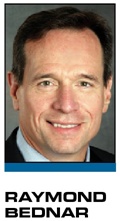“Sports marketing by objectives” is the phrase we use to describe a sports marketing program that is driven by accountability to a finite set of goals that advance the overall corporate strategy in a meaningful way.
Let’s break that down a bit. Accountability means identifying desired outcomes, setting specific realistic targets, tracking performance against relevant metrics, and honestly evaluating the relative success.
Without this degree of specificity, even a successful program won’t be replicable, and worse, corporate decision-makers won’t trust the outcome because any internal evaluation will seem subjective or, worse, biased.
From the top executives’ standpoint, marketing’s only job is to advance the corporate agenda, and it is ultimately the standard to which marketing decision-makers will be held accountable. Establish this accountability up front while you are designing sponsorship programs, report robust metrics that show progress against tangible corporate goals, and you will become a valued contributor in achieving the corporate agenda. Once you earn this level of trust, it’s a much smaller step toward earning a voice in helping to help set that agenda.
■ Where to begin?
Each sports marketing program’s goals and objectives should be derived from those of the corporation as a whole, placed in a sports marketing context. For each broad goal, such as revenue, there are many possible sub-goals, such as customer acquisition or retention, which may contribute to success.
For the specific sports marketing program, identify the sub-goals that could be targeted. Using the example of customer acquisition, key questions include:
■ How does your company acquire customers? This will help you to identify the consumer demographics and the factors in their purchase decisions, and determine which sponsorship opportunities are relevant.
■ How can this specific sponsorship investment attract new customers by increasing the volume or efficiency of one or more steps on that customer acquisition pathway?
■ How could the sponsorship proposal be fine-tuned to make customer acquisition as efficient and effective as possible in this program?
One of the traditional methods of looking at customer acquisition is the “purchase funnel.” A typical purchase funnel may have the following components:
■ Awareness
■ Consideration
■ Trial
■ Preference
■ Loyalty
As we move down the funnel, the raw number of consumers goes down, while the per-consumer value goes up. Broadly speaking, the two ways to increase sales are to channel more people into the top of the funnel by increasing awareness, or to increase the percentage that transition from one level to the next.
A sponsorship marketing program could be targeted at increasing awareness to drive more consumers into the funnel, improving the degree of connection with the brand to move consumers down the funnel, or both.
An awareness-focused campaign is generally more expensive, given the wider net a company must cast. With a smaller budget, sponsorship can be very efficient at driving desired behavior from those already in the funnel, since you already know much more about them.
Each goal must have an objective set of measures that can be used for evaluation. If it can’t be measured — so-called “soft goals” — it can’t be affected, and any resources devoted to such goals are essentially wasted from the perspective of corporate decision-makers.
■ Trial vs. preference
Let’s look deeper at two of the funnel levels: trial and preference. Each can be addressed in a sponsorship marketing program, but measurement and accountability work a little differently.
Trial is relatively easy as a sub-goal. If you tie your sports marketing program to a coupon or other redemption channel, such as a dedicated website, it’s easy to track how many consumers tried your product or service as a result of contact with the sports marketing program. The numbers can then be compared with other previous marketing programs to determine relative efficiency.
 |
|
Nike wanted to lasso the Jordan brand halo for its entire product line.
Photo by: GETTY IMAGES
|
This type of direct feedback also makes it easy to try out various tactics within the program to see which work best, such as on-site activation versus a Web-based contest. Adjustments may be made as the program moves forward, driving increased efficiency. This approach gives sponsorship marketing an advantage over mass-media marketing, which is much harder to adjust midstream.
The necessary follow-up step is to compare the conversion rate of those who try your product via sponsorship marketing versus those who engage in trial through another marketing channel:
■ Which one of these generates a higher percentage of long-term customers?
■ Which type of customer buys more volume, or opts for the more premium offering?
Preference, sometimes coupled with loyalty, is another common goal of a sponsorship marketing program. This frequently is where the idea of brand association comes into play.
 |
|
Bic reaches for the rugged outdoorsman market with the Tough Mudder sponsorship.
|
When Nike went all-in to associate its brand with Michael Jordan, the company wasn’t merely courting the handful of elite basketball players who could approach Jordan’s on-court skills. They wanted to lasso the Jordan brand halo for its entire product line. In a more recent example, Bic razors’ sponsorship of the Tough Mudder races may be an attempt to associate shaving with extreme manliness, battling the rising tide of rugged, three-day beards in popular culture.
Preference also can be measured, traditionally by using consumer research. One problem with the consumer-research method, though, is that typically there is a significant time lag between the consumer contact and when you get data, making it more difficult to fine-tune tactics. This may work best on a multiyear sponsorship.
■ Communicate success
Ideally, the measures should have a degree of consistency over time in order to evaluate whether you’re doing better or worse than before, allowing you to communicate the ongoing success of your program.
But don’t remain wedded to outdated goals just for the sake of comparability. Identifying the measures you will use beforehand not only saves time and trouble later, but it also can help the entire sports marketing team to focus on desired outcomes. By communicating these goals internally, those outside the marketing department will more easily recognize whether their initiatives could help — or may indeed hinder — what you’re trying to accomplish.
For the community relations group, the sports marketing program may provide themes or access to celebrities that would offer an ability to generate positive news coverage in a fresh new way. Major corporate financial announcements can be timed to take advantage of attention generated by the sports marketing program, or to avoid competing for media attention. After all, you don’t want your all-star spokesman to be fielding questions about layoffs or plant closures.
The result is a more productive, integrated team effort that recognizes the value and contributions of your programs.
Raymond Bednar (raymondbednar@hyperion-marketing.com) specializes in advising and implementing optimization strategies for investments in marketing channels at Hyperion Marketing Returns - Rockefeller Consulting in New York City.






